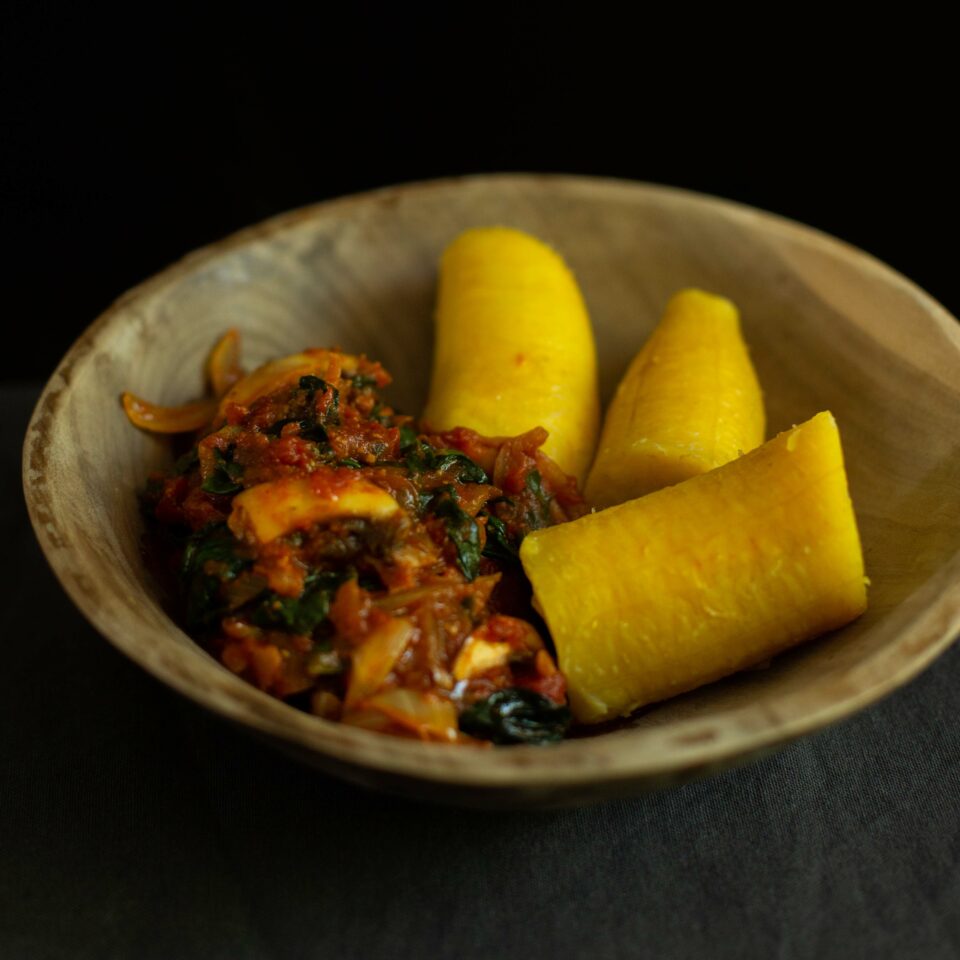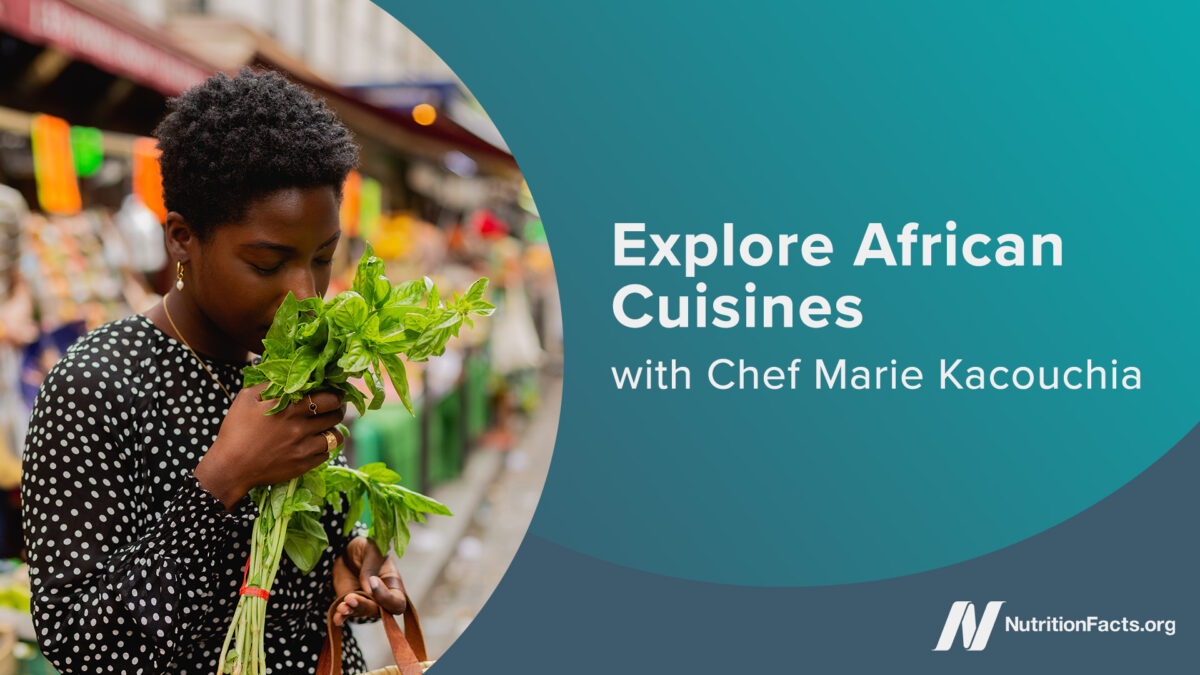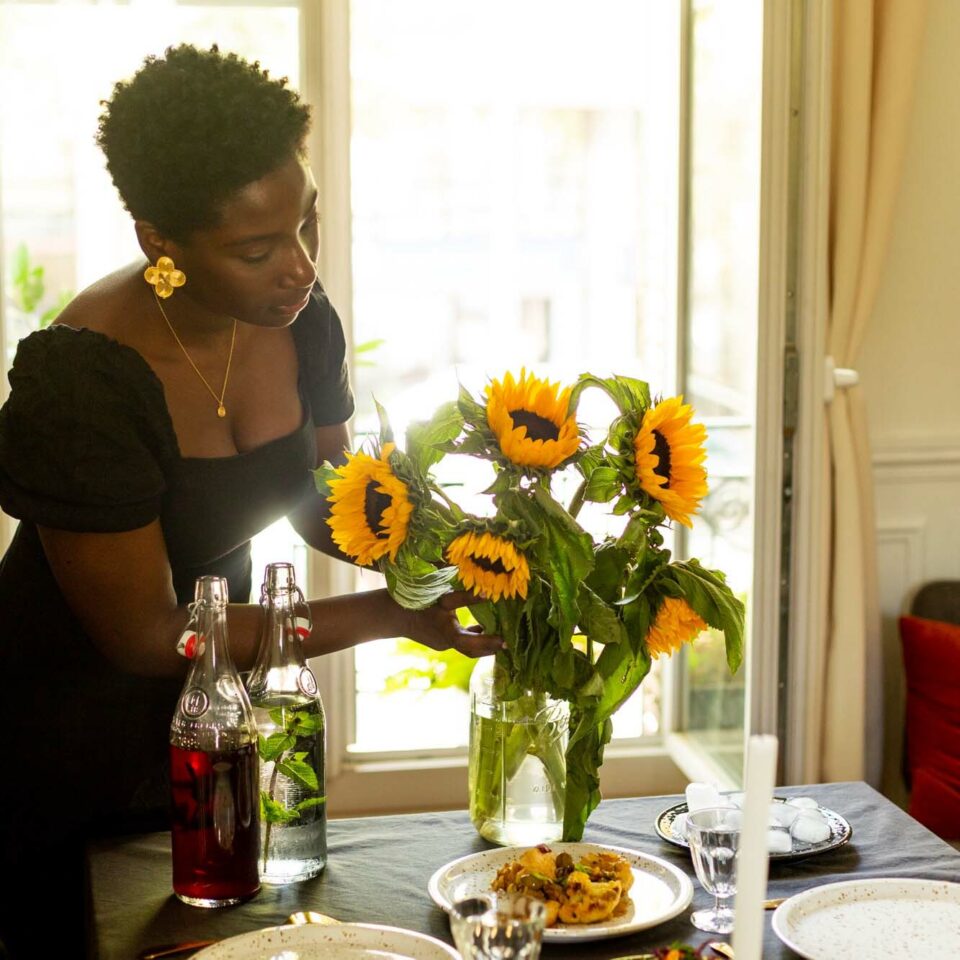|
Meet Chef Marie Kacouchia. We had the pleasure of interviewing her about food history, health, culture, and her cookbook, Vegan Africa. Read on and enjoy her recipe for Sautéed Spinach and Mushrooms with Plantains.
|
|
In your experience, how have you found food to tell a story and shape culture?
Food is both created by history and creates history. Cuisines are created by history because they mix with invasions and population movements. It shows the movements of people and the introduction of new ingredients, cooking methods, and recipes. Sometimes these cuisines are impoverished–think of the globalization of cuisine and fast foods–but often they come out richer. In my book Vegan Africa, for example, I highlight the Indo-Chinese influence on the cuisine of East Africa and the Lebanese influence on all of West Africa. These result in unique dishes that are consubstantial with the history of these parts of the world.
On a personal level, the way we eat says a lot about who we are, where we come from, and all of the people who came before us.
And, finally, cooking creates history because it brings people together. It creates bridges between people through commonality. In fact, it is often the first introduction we have to another culture.
How do you educate people about the intersection of food, history, health, and culture?
This book is the materialization of my personal journey. As a young adult, I began to question my identity and naturally my relationship with food was at the center of this reflection. I made the work of becoming more intentional about food because it plays such a big part in our lives. I began to ask myself more systematically: Why am I eating what I am eating? How was this food produced? By whom? How can I live fully without inflicting suffering on other beings? And, finally, How can I reclaim my ancestral culinary heritage?
I wanted to share the fruit of my research to shed light on African cuisines and to encourage others to want to know and appreciate them better. I hope to inspire others to see food for what it is: a sacred fuel for our bodies and a central component of our identity.
Please tell us a little bit about your cookbook Vegan Africa. What countries and cultures are highlighted in it?
Africa is a huge continent and the culinary cultures are very diverse. With my book, I humbly wanted to represent the whole continent, from North to South and from East to West. Vegan Africa includes recipes from Ivory Coast, Senegal, Mali, South Africa, Ghana, Kenya, and many other countries! It is, of course, more of an initiation or, as I like to say, an invitation to discover these rich African culinary cultures. During the writing of the book, I had the pleasure of exchanging recipes with many people from different African countries, and they entrusted me with recipes from their countries of origin.
In addition, some of the recipes in my cookbook are my own creations, the result of my travels and my experiments, such as Cassava Tabbouleh with radishes and Herbs and Red Cabbage Salad with Mango and Raw Okra. My book is also full of personal anecdotes, cooking tips, and family cooking secrets.
As a chef, what do you envision as the way forward to encourage people to include more fruits and vegetables into their diets?
Often, fruits and vegetables are seen as boring side dishes. We need to reverse this narrative and really put them back at the center of the plate. I believe this necessarily involves education. We have to make people aware of the need to eat a nutrient-dense diet for good health. I am also convinced that it involves kindness and curiosity. Often, people are resistant to change because they are afraid of changing their routines. That’s why, in my cooking, I make it a point of honor to use ingredients that are accessible everywhere and by nearly everyone. Then I try to show that with a few spices, it is possible to totally transform everyday foods and give them a new dimension. For example, the next time you cook carrots, why not try roasting them instead of boiling them? And have fun with flavors! Try citrus zest, cumin, sumac, cardamom, ginger, or smoked paprika. Open up the field of possibilities.
Please tell us a little bit about your work and career.
By day, I work in the health and wellness sector. I help companies whose mission is to help people take care of themselves to improve their Customer Experience. In addition to this, I run workshops and cooking classes.
I am also occasionally a chef for individuals and companies for very intimate dinners. And on top of that, one thing I never stop doing is developing new recipes that I share on my Instagram account @thespicysoul.
I have a very holistic approach to health, and bringing wellness to others is what motivates everything I do.
Sautéed Spinach and Mushrooms with Plantains
SERVES 4 ✦ PREP TIME: 15 minutes ✦ COOK TIME: 35 minutes
Dishes made with leafy greens are very popular in sub-Saharan Africa, particularly in South and Central Africa. Any leafy green will do—such as taro, cassava, sorrel, or sweet potato leaves—but here I opted for spinach leaves since they’re easy to find in most parts of the world.
|
2 tablespoons water |
 |
- Heat a large pan over medium heat. Add the water and onion, and cook until the onion is translucent, about 5 minutes.
- Add the tomatoes, and cook for about 5 more minutes, stirring regularly.
- Add the mushrooms, and stir to combine.
- Gradually add the spinach, stirring until it wilts.
- Stir in the curry, smoked paprika, garlic powder, and black pepper (to taste). Bring to a simmer, cover, and cook, stirring occasionally, until thickened, about 10 minutes. If the mixture sticks to the pan, stir in a splash of water.
- Meanwhile, place the plantains in a large pot, cover with water, and bring to a boil. Cook until easily pierced with a fork, about 15 minutes.
- Serve the spinach and mushrooms along with the plantains.
TIP: The greener the plantains, the less sugar they have. To steam the plantains, make a small cut halfway through each piece. Place in a steamer, and steam until easily pierced with a fork, about 10 minutes.
You can find Chef Marie Kacouchia on Instagram @thespicysoul

